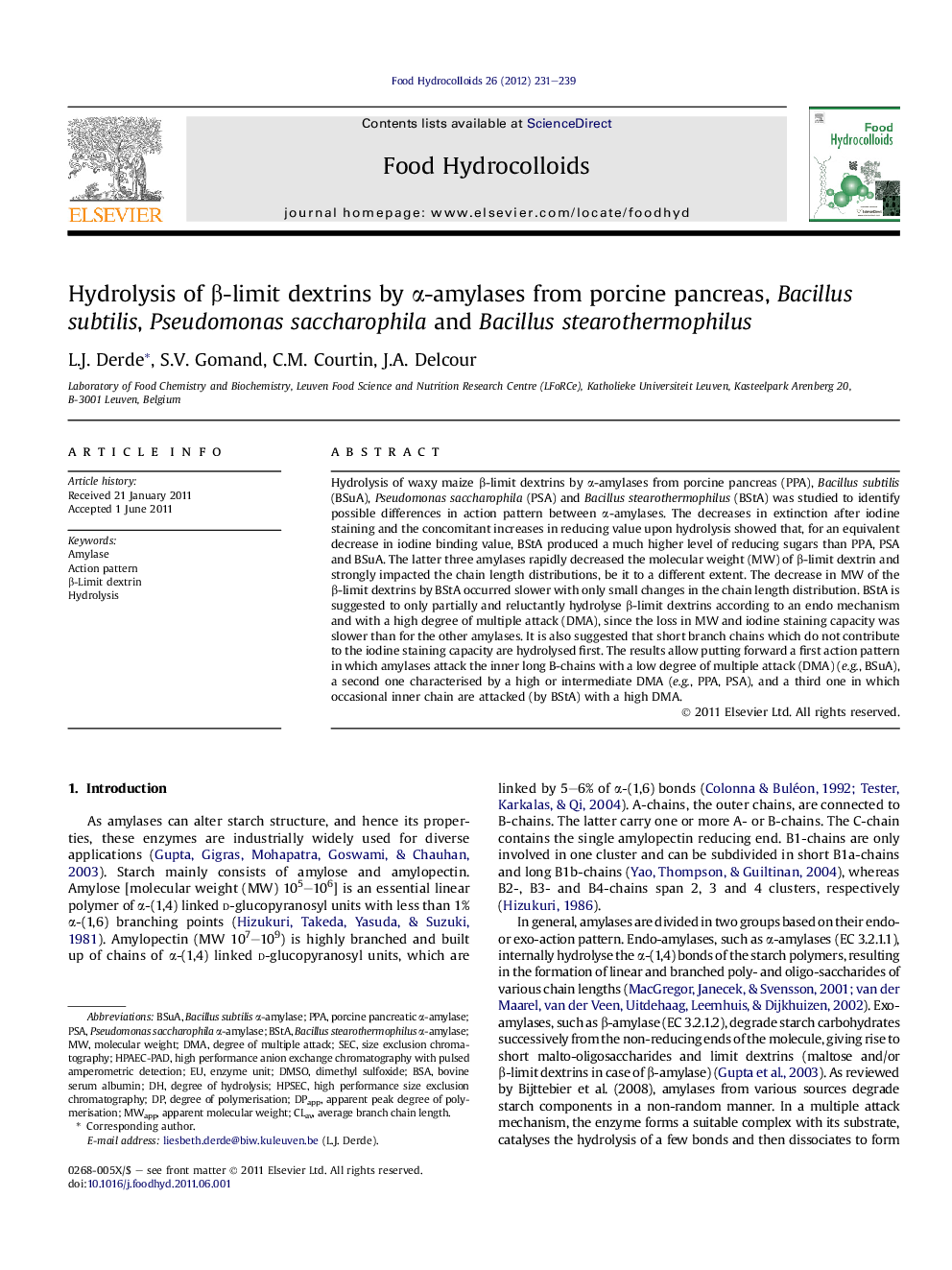| Article ID | Journal | Published Year | Pages | File Type |
|---|---|---|---|---|
| 605001 | Food Hydrocolloids | 2012 | 9 Pages |
Hydrolysis of waxy maize β-limit dextrins by α-amylases from porcine pancreas (PPA), Bacillus subtilis (BSuA), Pseudomonas saccharophila (PSA) and Bacillus stearothermophilus (BStA) was studied to identify possible differences in action pattern between α-amylases. The decreases in extinction after iodine staining and the concomitant increases in reducing value upon hydrolysis showed that, for an equivalent decrease in iodine binding value, BStA produced a much higher level of reducing sugars than PPA, PSA and BSuA. The latter three amylases rapidly decreased the molecular weight (MW) of β-limit dextrin and strongly impacted the chain length distributions, be it to a different extent. The decrease in MW of the β-limit dextrins by BStA occurred slower with only small changes in the chain length distribution. BStA is suggested to only partially and reluctantly hydrolyse β-limit dextrins according to an endo mechanism and with a high degree of multiple attack (DMA), since the loss in MW and iodine staining capacity was slower than for the other amylases. It is also suggested that short branch chains which do not contribute to the iodine staining capacity are hydrolysed first. The results allow putting forward a first action pattern in which amylases attack the inner long B-chains with a low degree of multiple attack (DMA) (e.g., BSuA), a second one characterised by a high or intermediate DMA (e.g., PPA, PSA), and a third one in which occasional inner chain are attacked (by BStA) with a high DMA.
Graphical abstractFigure optionsDownload full-size imageDownload as PowerPoint slide
